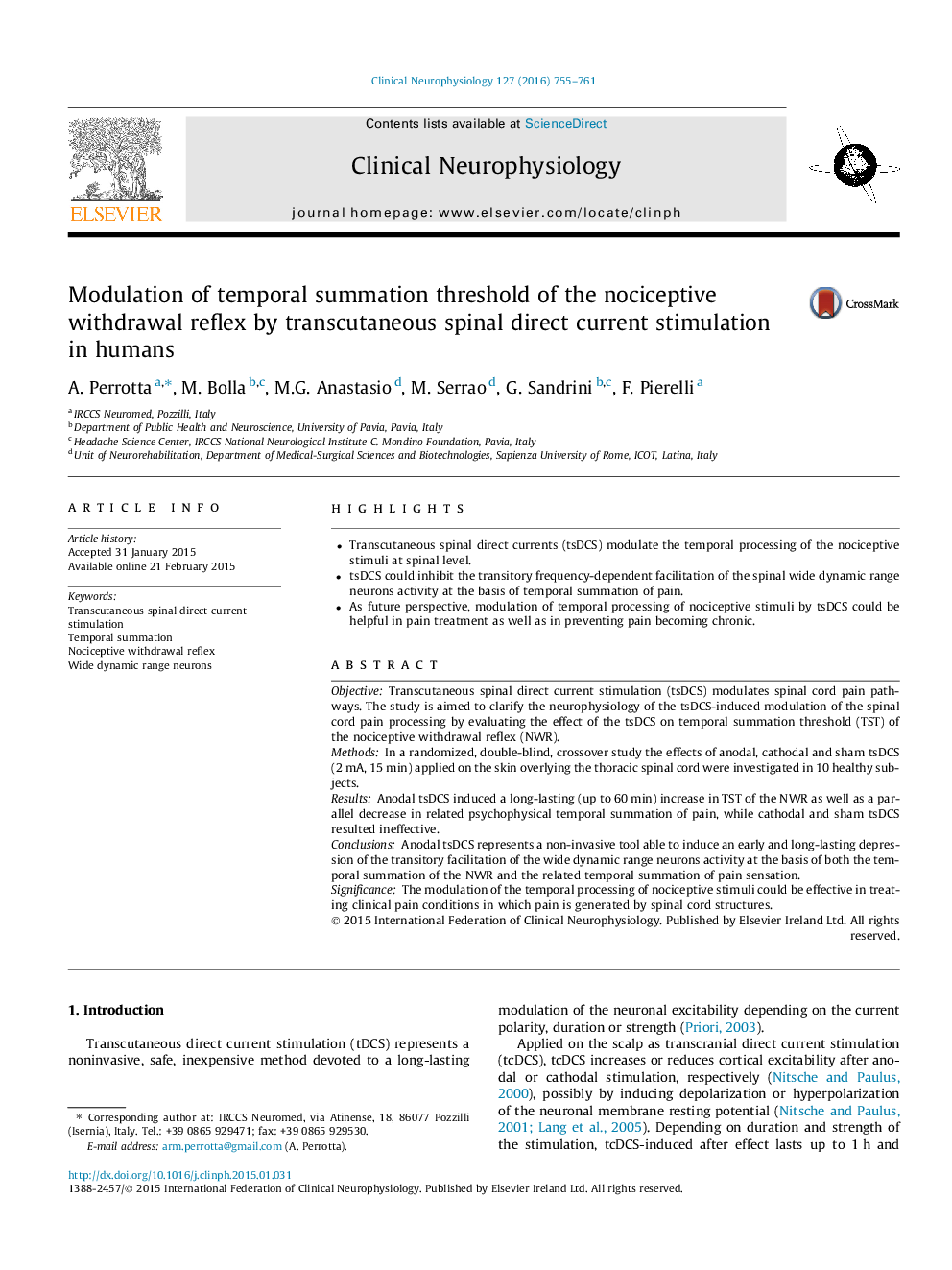| Article ID | Journal | Published Year | Pages | File Type |
|---|---|---|---|---|
| 6007984 | Clinical Neurophysiology | 2016 | 7 Pages |
â¢Transcutaneous spinal direct currents (tsDCS) modulate the temporal processing of the nociceptive stimuli at spinal level.â¢tsDCS could inhibit the transitory frequency-dependent facilitation of the spinal wide dynamic range neurons activity at the basis of temporal summation of pain.â¢As future perspective, modulation of temporal processing of nociceptive stimuli by tsDCS could be helpful in pain treatment as well as in preventing pain becoming chronic.
ObjectiveTranscutaneous spinal direct current stimulation (tsDCS) modulates spinal cord pain pathways. The study is aimed to clarify the neurophysiology of the tsDCS-induced modulation of the spinal cord pain processing by evaluating the effect of the tsDCS on temporal summation threshold (TST) of the nociceptive withdrawal reflex (NWR).MethodsIn a randomized, double-blind, crossover study the effects of anodal, cathodal and sham tsDCS (2Â mA, 15Â min) applied on the skin overlying the thoracic spinal cord were investigated in 10 healthy subjects.ResultsAnodal tsDCS induced a long-lasting (up to 60Â min) increase in TST of the NWR as well as a parallel decrease in related psychophysical temporal summation of pain, while cathodal and sham tsDCS resulted ineffective.ConclusionsAnodal tsDCS represents a non-invasive tool able to induce an early and long-lasting depression of the transitory facilitation of the wide dynamic range neurons activity at the basis of both the temporal summation of the NWR and the related temporal summation of pain sensation.SignificanceThe modulation of the temporal processing of nociceptive stimuli could be effective in treating clinical pain conditions in which pain is generated by spinal cord structures.
